The world of finance is undergoing a transformative revolution, and at its forefront is DeFi 2.0, redefining banking as we know it. Decentralized Finance (DeFi) emerged as a disruptive force in 2020, challenging traditional banking with its promise of transparency, immutability, and the elimination of trusted intermediaries. Now, with the advent of DeFi 2.0, we are witnessing the next phase of this evolution, characterized by innovative protocols and novel approaches to financial stability. In this article, we will explore the core concepts of DeFi 2.0, its benefits, and the potential it holds for reshaping the financial landscape.
DeFi ecosystem
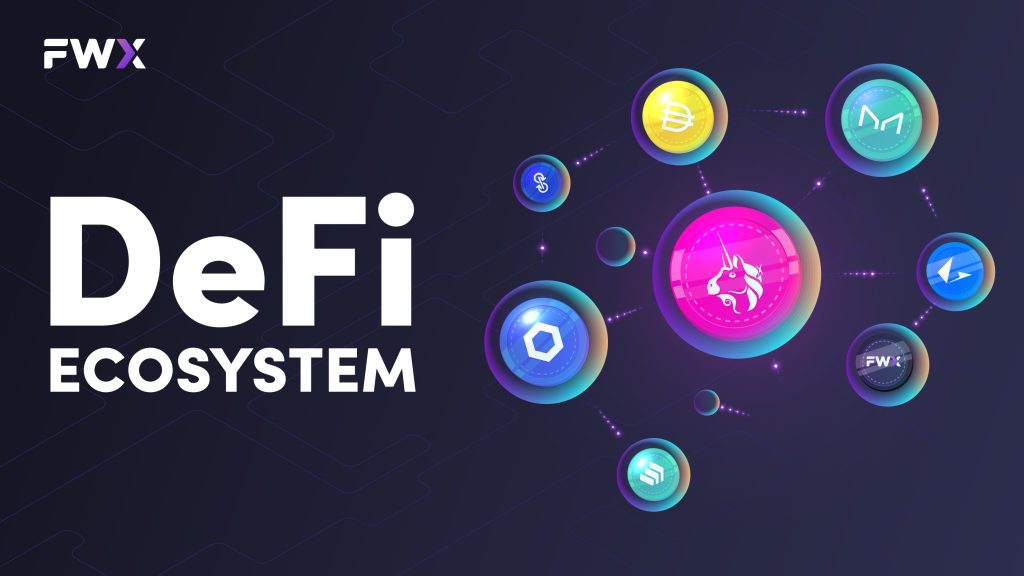
Decentralized Finance, also known as DeFi in the cryptocurrency world, is closely linked to the blockchain ecosystem and the economy. It started to grow rapidly in 2020 after establishing Uniswap, the first Decentralized Exchange (DEX) built on the Ethereum network. DeFi is a revolutionary development in the traditional financial system, moving towards decentralized structures based on smart contracts. DeFi provides three key benefits:
- Greater transparency,
- An immutable record of transactions,
- The elimination of the need for trusted third parties.
While Bitcoin could be seen as the first DeFi platform, the concept of smart contracts was first presented by Nick Szabo in 1994. The advent of DeFi and its increasing adoption worldwide challenges the advantages of traditional banks and large financial institutions, rendering them mostly obsolete. This is because DeFi technology empowers individuals to create financial products that are equitable and transparent.
The advancements in DeFi have enabled individuals to provide liquidity to a decentralized exchange, and any participant in this market can seek a loan by using cryptocurrency as collateral. With DeFi, it is now possible to borrow money or apply for financial services through a mobile application without needing a bank as an intermediary. This shift can be seen as a move towards a new kind of economy that is decentralized, borderless, and democratic. This transformation differs from the FinTech industry, which emerged after the 2008 financial crisis as a means of creating digital finance that is fast, efficient, and affordable and which can reach a large number of customers. Unlike FinTech, DeFi employs decentralized blockchains, eliminating intermediaries and the bureaucratic procedures associated with traditional banking while offering loans through tokenized debt. DeFi also facilitates peer-to-peer money transfers through non-custodial wallets like Metamask and DEXs govern the markets.
Unlike centralized exchanges like Binance or Coinbase, Decentralized Exchanges (DEXs) are based on smart contracts, enabling users to buy and sell tokens without requiring a third party. This decentralization is achieved through programmable escrows known as Hashed Timelock Contracts or atomic swaps. DEXs are commonly referred to as Automated Market Makers (AMMs) because they allow trading without an order book and rely on liquidity pools instead. Users can contribute liquidity to the platform and receive a commission every time a trader utilizes it. Liquidity pools always contain two tokens in a specific proportion, such as ETH/USDC, and the liquidity provider must contribute the two tokens in the same proportion. The liquidity pool’s value is represented by k, which is determined by multiplying the two tokens. k remains constant at all times. If a user buys 0.5 ETH for 1500 USDC, the price of Ethereum will increase, and the amount of ETH in the liquidity pool will decrease while the amount of USDC will increase. The market regulates prices to prevent them from becoming excessively high or low, and arbitrage opportunities arise if there is a price disparity between different exchanges, which helps balance prices.
Major concerns in DeFi 1.0
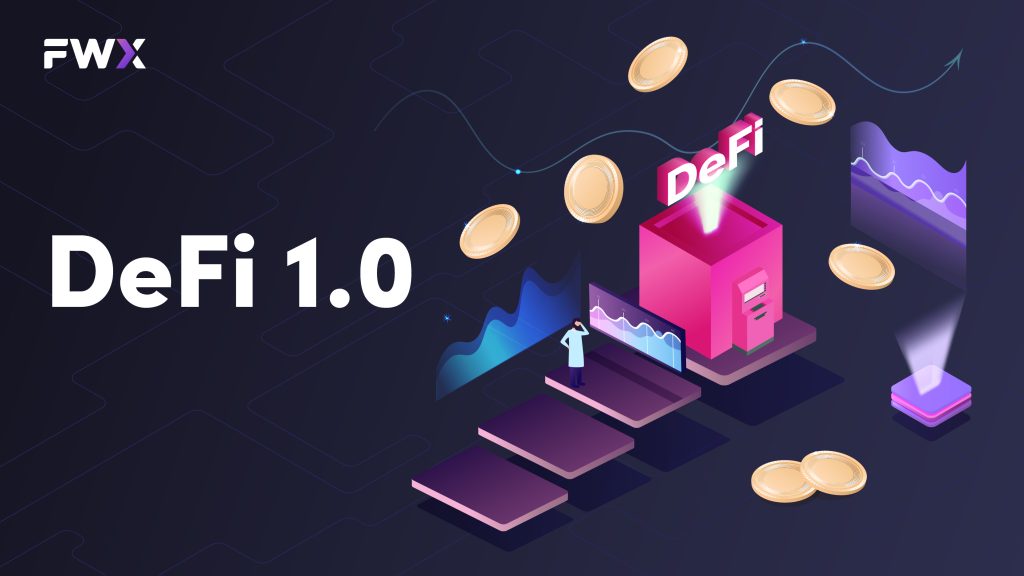
The method explained earlier via AMMs enables price determination without needing an order book, which is required in centralized exchanges. It allows for the automation of processes and decentralization. However, there are two significant concerns associated with this system:
- In the DeFi 1.0 model, users lend their liquidity to protocols and can withdraw it at any time to move it to new protocols that offer better returns in terms of APR and APY. This frequent migration creates instability and manipulation by users with significant funds, leading to the failure of many protocols due to the sudden depletion of their most valuable asset: liquidity.
- The decentralization of finance provides numerous benefits but also entails significant risks such as cyber risks, impermanent loss, and rug pulls. For instance, hackers may exploit vulnerabilities in smart contracts, while developers may abandon projects and disappear with users’ funds. Moreover, regular users may need a trusted intermediary to gain the necessary knowledge and skills to manage their assets.
Arrival of DeFi 2.0
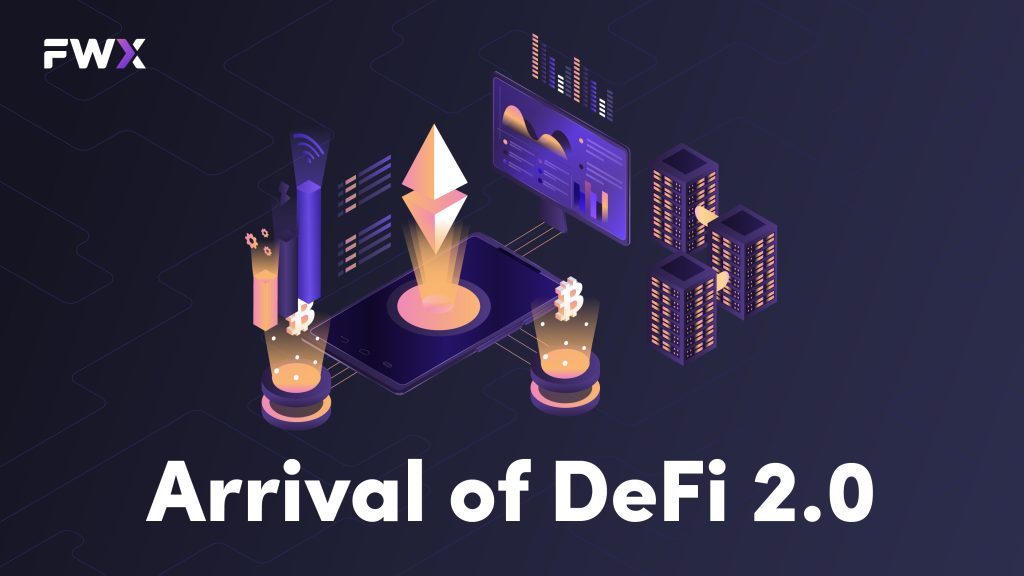
Introducing DeFi 2.0 through the launch of Olympus Dao in mid-2021 has brought about a significant shift in the decentralized finance landscape. Unlike DeFi 1.0, where users lend their liquidity to protocols, in DeFi 2.0, the protocol buys liquidity from users and adds it to the Decentralized Autonomous Organization (DAO) treasury. As compensation, the user is awarded tokens represented by the platform’s native token, purchased at a discounted rate. However, there is still a risk of a sell-off of the native token by large investors or whales. To counteract this, DeFi 2.0 offers incentives to users with high Annual Percentage Yields (APYs) to stake their tokens on the platform rather than sell them or use them as collateral to borrow stable currency. The Olympus Dao, the first DeFi 2.0 protocol built on the Ethereum blockchain, provides a clear view of the workings of the entire platform, such as market capitalization, the market price of the OHM token, the circulating supply and the backing price, the risk-free value, the protocol owned liquidity, and the OHMs staked.
Regarding the 3 gOHM token, it functions as a governance currency. Its value is determined by multiplying the current index by the price of 1 OHM (now approximately 10 USDT and the highest at 1,300 USDT). The current index refers to the amount of OHMs that would be held if 1 OHM had been subject to compound interest from the start of the protocol, and it increases every 8 hours following the distribution of profits (rebase). As a result, the number of gOHMs that an individual holds will remain constant, but their value will increase as the current index increases. Additionally, OHMs can be staked to acquire sOHMs, which will earn interest at a rate of 4,000% in 2022.
The high APY offered by staking OHMs prompts the question of how the protocol can afford such incentives. The answer is that the protocol only needs 1 DAI ($1) to issue an OHM token through smart contracts. The platform then sells OHMs at a market price of approximately $190 (in 2022), yielding a profit of 19,000%. The liquidity generated by this process is then deposited into other platforms as LP tokens to receive incentives. This model appears profitable for the protocol and more sustainable than DeFi 1.0. However, two are three drawbacks to this model:
- The protocol’s monetary policy is inflationary, which means that over time the value of the token is likely to decrease.
- To ensure long-term sustainability, users are encouraged to actively participate in the market, which some may interpret as a characteristic of a Ponzi scheme.
As more users get involved, the APYs are expected to decrease. The concern is that users might withdraw their tokens from staking, resulting in increased selling pressure, and move to other DeFi 2.0 protocols that offer better returns. This is similar to what occurred with DeFi 1.0.
What is DeFi 2.0?
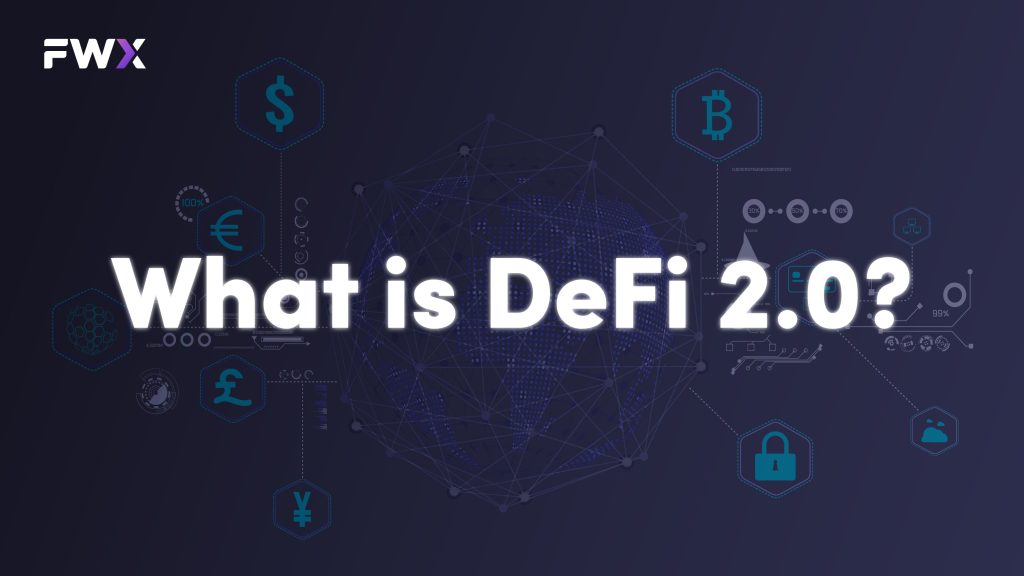
The concrete definition of DeFi 2.0 is now subjective. However, DeFi 2.0 may refer to the next stage of development in the decentralized finance ecosystem, where the focus is on building more sophisticated financial applications that are highly scalable and can handle large volumes of transactions with lower gas fees. One of the key features of DeFi 2.0 is the use of DAOs. The DeFi 2.0 infrastructure is being built on top of blockchain technology, allowing for trustless and permissionless financial transactions without intermediaries. DeFi 2.0 applications are also exploring using Layer 2 scaling solutions to improve transaction throughput and reduce gas fees. For example, Optimism is a Layer 2 scaling solution used by several DeFi protocols, including Uniswap and Synthetix, to reduce gas fees and increase transaction speeds.
In DeFi 2.0, various decentralized applications have emerged.
- Uniswap V3: Uniswap V3 is a decentralized exchange that operates on Ethereum. It incorporates a novel pricing mechanism that allows for efficient trading even during times of high market volatility. Additionally, Uniswap V3 is designed to be highly scalable, handling a large number of transactions.
- Aave V2: Aave V2 is a lending and borrowing platform that is also built on Ethereum. Aave V2 includes features like flash loans and credit delegation, enabling users to manage their assets more and earn better yields. Furthermore, Aave V2 uses an updated version of its smart contract for lending pools that is more efficient and flexible than its previous iteration.
- Olympus DAO: Olympus DAO is considered to be a DeFi 2.0 project. It is a decentralized autonomous organization (DAO) built on the Ethereum blockchain that focuses on providing a stablecoin ecosystem that is not pegged to any external asset, such as the US dollar. Instead, it uses its own native token, OHM, as the basis for its monetary system. OHM is designed to maintain a stable price floor through a mechanism called “rebase,” which adjusts the token’s supply based on demand.
New era of DeFi
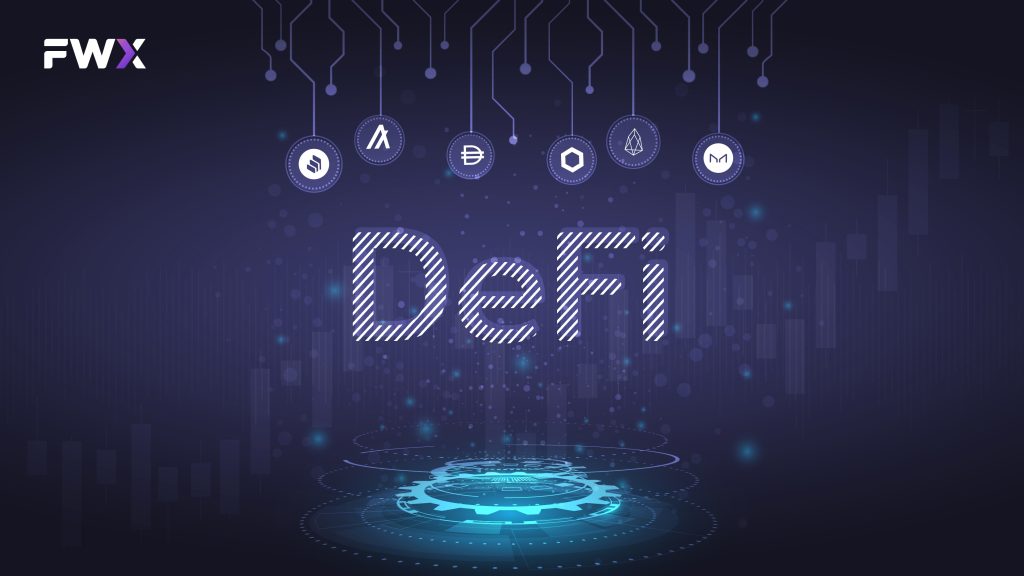
Professor Huerta de Soto proposes a reform to prevent banking and cyclical economic crises, promote stable economic growth, prevent speculation, and protect depositors’ property rights. The proposal focuses on three main aspects:
- Complete freedom for individuals to choose their currency, removing government and central bank intervention in currency issuance and value control.
- The elimination of central banks and any government agency that controls or intervenes in financial markets.
- Requiring banks to maintain a 100% cash ratio for demand deposits, which upholds traditional principles of property and law.
According to Professor Spinoglio, the proposal is broken down into the following key points:
- Establishing a private banking ecosystem that uses blockchain technology.
- Allowing each bank to create their own currency and adopt a DeFi 2.0-like model.
- Requiring all banks to maintain a 100% cash ratio for demand deposits.
- Shifting the role of the Central Bank to one of supervision and oversight, ensuring that commercial banks adhere to the new model’s rules and regulations, and punishing any unethical practices that are discovered during periodic audits.
In the proposed model, the Central Bank’s role would be to oversee the functioning of commercial banks, acting like a federated DAO that represents the interests of all banks and ensures ethical conduct through periodic audits. The Central Bank would also prevent banks from engaging in unethical practices and cannibalizing each other’s token sales. However, there are certain risk factors associated with this model. Firstly, until a commercial bank achieves a stable cash flow, it would be required to keep selling bonds, which could resemble a Ponzi scheme. Nonetheless, the first user to enter the system would benefit more from staking returns, while the late users may receive more tokens by selling the same amount of liquidity as the first ones. If the commercial bank appropriately manages its treasury, it can expand its Runaway Available and become sustainable over time by implementing token burning to stabilize the token’s price. Secondly, the banking ecosystem may not work as a free market but rather as an oligarchy, which could lead to cannibalization in token issuance. The Central Bank’s participation in the private blockchain as a supervisor and judge of the banking ecosystem is crucial to preventing such scenarios and designing a set of rules that all nodes must respect regarding the issuance of tokens.
Conclusion
As we delve into the realm of DeFi 2.0, it becomes evident that this is not merely an extension of its predecessor but a quantum leap in financial innovation. With projects like Olympus DAO and Uniswap V3 leading the charge, we are witnessing a new era where trustless, permissionless, and transparent financial systems are becoming the norm. While challenges and risks persist, the vision of a decentralized, equitable, and resilient financial ecosystem drives the evolution of DeFi 2.0. Whether it’s the proposal for private banking ecosystems or the role of the Central Bank as a regulator, the future of finance is being rewritten, and it promises to be a thrilling chapter in the history of banking and finance.


